Key Takeaways
- Leverage diverse hiring channels – Use job portals like 9cv9, recruitment agencies, networking events, and social media to attract top talent.
- Ensure legal compliance – Follow Alberta’s labor laws, employment contracts, and work permits to avoid hiring risks and penalties.
- Focus on retention and onboarding – Implement strong onboarding programs, competitive benefits, and career growth opportunities to retain employees.
Hiring the right employees is a critical factor in ensuring business success, especially in a competitive and evolving job market like Calgary, Canada.
As 2025 unfolds, employers in Calgary must navigate an employment landscape shaped by shifting economic trends, technological advancements, and evolving workforce expectations.
From small businesses to large enterprises, companies must adopt strategic hiring approaches to attract, recruit, and retain top talent effectively.

Calgary, known as a hub for industries such as energy, technology, finance, and healthcare, presents unique hiring opportunities and challenges.
The city continues to experience economic diversification, with growing demand for skilled professionals in emerging sectors like artificial intelligence, clean energy, and digital transformation.
At the same time, the competition for qualified talent has intensified, making it essential for employers to refine their recruitment strategies and offer compelling value propositions to job seekers.
With the rise of remote and hybrid work models, the traditional hiring process has also undergone significant changes.
Employers must now leverage modern recruitment technologies, data-driven hiring practices, and employer branding strategies to stand out in a crowded job market.
Additionally, understanding employment laws, government regulations, and labor market trends in Alberta is crucial to ensuring compliance and fostering a positive workplace environment.
This comprehensive guide will walk employers through the essential steps of finding and hiring employees in Calgary in 2025.
It will cover key aspects such as identifying hiring needs, utilizing the best recruitment channels, conducting effective interviews, complying with legal requirements, and retaining top talent for long-term business success.
Whether you are a startup looking for your first hires or a well-established company aiming to expand your workforce, this article provides actionable insights to help you navigate the hiring process efficiently.
By implementing best hiring practices, businesses can not only attract skilled professionals but also build a strong and motivated workforce that drives innovation and growth.
As the job market continues to evolve, staying ahead of recruitment trends and adapting to changing employee expectations will be key to long-term success in Calgary’s dynamic employment landscape.
Before we venture further into this article, we would like to share who we are and what we do.
About 9cv9
9cv9 is a business tech startup based in Singapore and Asia, with a strong presence all over the world.
With over nine years of startup and business experience, and being highly involved in connecting with thousands of companies and startups, the 9cv9 team has listed some important learning points in this overview of How to Find and Hire Employees in Calgary, Canada in 2025.
If your company needs recruitment and headhunting services to hire top-quality employees, you can use 9cv9 headhunting and recruitment services to hire top talents and candidates. Find out more here, or send over an email to [email protected].
Or just post 1 free job posting here at 9cv9 Hiring Portal in under 10 minutes.
How to Find and Hire Employees in Calgary, Canada in 2025
- Understanding the Calgary Job Market in 2025
- Defining Your Hiring Needs
- Where to Find Employees in Calgary
- The Hiring Process: Steps to Recruit Top Talent
- Legal Considerations and Compliance in Hiring
- Retaining and Onboarding Employees for Long-Term Success
- Future Hiring Trends in Calgary
1. Understanding the Calgary Job Market in 2025
The job market in Calgary, Canada, continues to evolve due to economic shifts, technological advancements, and changing workforce demographics. Employers looking to hire in 2025 must stay updated on key employment trends, in-demand industries, government policies, and workforce expectations to attract top talent.
Employment Trends in Calgary for 2025
Calgary’s employment landscape is undergoing significant transformations, driven by factors such as economic recovery, industry diversification, and digitalization.
- Continued Economic Diversification
- While Calgary has traditionally been an energy-driven economy, there has been a significant shift toward sectors such as technology, finance, and healthcare.
- The city is seeing increased investments in renewable energy, artificial intelligence, and digital transformation, creating new employment opportunities.
- The rise of startups and small businesses is contributing to job creation across multiple industries.
- The Impact of Technology and Automation
- Companies are integrating AI-driven tools for efficiency, reducing the demand for certain manual labor jobs while increasing demand for tech-driven roles.
- Automation is reshaping traditional industries, requiring employees to upskill and adapt to digital tools and AI-powered solutions.
- Employers need to focus on hiring candidates with data analytics, cloud computing, cybersecurity, and AI-related expertise.
- Remote and Hybrid Work Trends
- Post-pandemic workplace flexibility remains a key factor in employment decisions.
- Many companies in Calgary are adopting hybrid work models, allowing employees to work partially from home while maintaining physical office presence.
- Businesses that offer flexible work arrangements have a competitive advantage in attracting and retaining skilled professionals.
Key Industries in Demand in Calgary
As the job market evolves, certain industries are experiencing high demand for skilled workers. Employers in these sectors must refine their recruitment strategies to attract the right candidates.
- Technology and IT
- Calgary has been growing as a tech hub, attracting investment from major tech companies and startups.
- High-demand roles include software developers, cloud engineers, cybersecurity specialists, and AI professionals.
- Example: The Alberta government’s investment in digital transformation has fueled demand for tech talent in both private and public sectors.
- Renewable Energy and Clean Tech
- Calgary is shifting from a traditional oil and gas economy to renewable energy initiatives.
- Companies specializing in solar, wind, and hydrogen energy are hiring engineers, project managers, and sustainability experts.
- Example: Alberta’s commitment to reducing carbon emissions has led to job growth in clean energy and green technology firms.
- Finance and Business Services
- The finance sector remains strong, with opportunities in banking, investment management, fintech, and accounting.
- Positions in financial analysis, risk management, and digital banking solutions are in high demand.
- Healthcare and Life Sciences
- An aging population and increasing healthcare needs are driving job growth in hospitals, clinics, and biotech companies.
- High-demand roles include nurses, medical researchers, pharmacists, and healthcare administrators.
- Example: The University of Calgary’s biomedical research initiatives are creating employment opportunities in life sciences.
- Construction and Infrastructure Development
- Large-scale infrastructure projects, residential developments, and commercial expansions are fueling demand for skilled trades.
- Electricians, plumbers, civil engineers, and project managers are in high demand.
- Example: Calgary’s urban expansion and new commercial projects continue to generate jobs in construction and engineering.
Government Policies and Regulations Affecting Hiring
Employers in Calgary must comply with federal and provincial labor laws to ensure fair and legal hiring practices.
- Minimum Wage and Compensation Laws
- Alberta’s minimum wage policies impact salary structures and compensation expectations.
- Employers must stay updated on wage adjustments to remain competitive and compliant.
- Work Permits and Immigration Policies
- Calgary relies on skilled immigrants to fill labor shortages in key industries.
- Employers must navigate Canada’s Express Entry and Provincial Nominee Program (PNP) to hire international talent.
- Example: The Alberta Advantage Immigration Program (AAIP) helps businesses attract skilled workers from abroad.
- Employment Standards and Worker Rights
- Employers must comply with Alberta’s Employment Standards Code regarding work hours, overtime, vacation pay, and termination policies.
- Adhering to workplace safety regulations is essential, particularly in industries like construction and healthcare.
- Diversity, Equity, and Inclusion (DEI) Initiatives
- Companies are encouraged to build diverse workforces by implementing inclusive hiring practices.
- Government programs offer incentives for businesses that prioritize hiring from underrepresented groups, such as Indigenous peoples and persons with disabilities.
The Future of the Workforce in Calgary
The workforce in Calgary is evolving, with new expectations from employees regarding work culture, benefits, and career growth opportunities.
- Increased Demand for Upskilling and Continuous Learning
- Employees are seeking professional development opportunities, pushing companies to offer training programs.
- Businesses investing in upskilling initiatives gain a competitive edge in retaining top talent.
- Emphasis on Work-Life Balance
- Job seekers in 2025 prioritize mental health benefits, flexible work schedules, and wellness programs.
- Employers who offer comprehensive benefits beyond salaries have a higher chance of attracting qualified candidates.
- Rise of Gig and Freelance Work
- More professionals are shifting to contract-based, freelance, or gig work, particularly in industries like IT, marketing, and creative services.
- Companies must adapt hiring strategies to accommodate a mix of full-time, part-time, and contract-based employees.
Conclusion
The Calgary job market in 2025 presents both opportunities and challenges for employers. With emerging industries, technological advancements, and shifting workforce expectations, businesses must adopt modern hiring strategies to attract and retain top talent. By understanding economic trends, industry demands, and government regulations, employers can create effective recruitment plans that align with the evolving job landscape. Hiring in Calgary requires adaptability, strategic workforce planning, and a focus on long-term employee engagement to build a strong and competitive workforce.
2. Defining Your Hiring Needs
Before beginning the hiring process, employers in Calgary must clearly define their hiring needs to ensure they attract the right talent. A well-structured hiring strategy not only helps in filling vacant positions effectively but also enhances workforce productivity and long-term business success. In 2025, Calgary’s job market is competitive, requiring businesses to take a more strategic approach to workforce planning.
Defining hiring needs involves assessing workforce requirements, identifying skill gaps, understanding job market trends, and aligning recruitment efforts with business goals. Employers must also consider industry-specific demands, evolving job roles, and technological advancements to ensure their hiring plans remain relevant.
Assessing Workforce Requirements
Before hiring new employees, businesses must conduct a thorough assessment of their current workforce and future talent needs.
- Evaluating Business Growth and Expansion Plans
- Identify whether the company is scaling up operations, launching new projects, or entering new markets.
- Example: A Calgary-based renewable energy company expanding into hydrogen power may need to hire engineers, project managers, and environmental consultants.
- Consider seasonal hiring demands, especially in industries like construction, retail, and tourism.
- Analyzing Workload and Productivity
- Assess whether existing employees are handling workloads efficiently or if additional support is required.
- Example: A healthcare clinic experiencing increased patient visits may need to hire additional nurses, administrative staff, and specialists.
- Determine if new hires are needed to prevent employee burnout and improve productivity.
- Identifying Future Talent Needs
- Forecast skill requirements based on industry trends and upcoming technological advancements.
- Example: A Calgary-based fintech startup investing in blockchain technology may require blockchain developers and cybersecurity experts in the coming years.
- Consider long-term hiring strategies to align with business growth objectives.
Identifying Skill Gaps in Your Organization
Understanding skill shortages within the company helps businesses hire the right professionals with the necessary expertise.
- Conducting a Skills Gap Analysis
- Evaluate current employees’ skills and identify areas that need improvement.
- Use employee performance reviews, feedback surveys, and industry benchmarks to determine skill deficiencies.
- Example: An IT company in Calgary may find a gap in cloud computing skills and decide to hire AWS-certified professionals.
- Hiring for Emerging Skills and Technologies
- Identify skills that will be crucial for the company’s success in the next five years.
- Example: As artificial intelligence and automation continue to grow, businesses may need AI engineers, machine learning specialists, and data analysts.
- Consider reskilling existing employees or hiring new talent with expertise in emerging fields.
- Balancing Soft Skills and Technical Skills
- While technical expertise is important, employers must also look for candidates with strong problem-solving, communication, and leadership skills.
- Example: A sales-driven company may prioritize hiring candidates with excellent negotiation and relationship-building skills in addition to product knowledge.
Determining the Type of Hire Needed
Once workforce requirements and skill gaps are identified, employers must decide on the type of hire that best suits their needs.
- Full-Time vs. Part-Time Employees
- Full-time employees are suitable for long-term positions requiring stability and commitment.
- Part-time employees are ideal for businesses with fluctuating workloads or seasonal demands.
- Example: A Calgary retail store hiring part-time sales associates during the holiday season to manage increased customer traffic.
- Contract and Freelance Workers
- Hiring freelancers or contract workers allows businesses to access specialized skills on a temporary basis.
- Example: A marketing agency in Calgary may hire a freelance graphic designer for a short-term branding project instead of a full-time employee.
- Remote and Hybrid Work Models
- Many companies are embracing remote and hybrid work arrangements to attract top talent.
- Example: A software company hiring remote developers from other provinces while maintaining a small in-office team for collaborative projects.
- Interns and Apprentices
- Hiring interns or apprentices is an effective way to build a talent pipeline and train potential full-time employees.
- Example: A Calgary-based engineering firm collaborating with local universities to offer internships for civil engineering students.
Creating Detailed Job Descriptions
A well-defined job description is essential for attracting qualified candidates and setting clear expectations.
- Outlining Key Responsibilities and Duties
- Clearly define the role’s daily tasks, responsibilities, and objectives.
- Example: A logistics company hiring a supply chain manager should specify duties like inventory management, supplier coordination, and cost reduction strategies.
- Defining Required Skills and Qualifications
- List essential technical and soft skills needed for the role.
- Specify educational qualifications, certifications, and years of experience required.
- Example: A cybersecurity firm in Calgary looking for an ethical hacker may require certifications such as Certified Ethical Hacker (CEH) or Offensive Security Certified Professional (OSCP).
- Highlighting Salary, Benefits, and Career Growth Opportunities
- Provide salary ranges based on industry standards in Calgary.
- Mention employee benefits such as health insurance, retirement plans, and professional development programs.
- Example: A competitive salary and career progression plan can attract top-tier software engineers in Calgary’s growing tech sector.
Aligning Hiring Needs with Business Goals
Every hiring decision should support the company’s overall mission, vision, and strategic objectives.
- Ensuring Workforce Scalability
- Hire employees who can adapt to future business changes and industry shifts.
- Example: A Calgary-based e-commerce startup should look for employees with skills in both digital marketing and data analytics to scale operations efficiently.
- Prioritizing Culture Fit and Diversity
- Hiring candidates who align with company values and culture improves retention and employee satisfaction.
- Example: A non-profit organization in Calgary focusing on social impact should prioritize candidates passionate about community development.
- Leveraging Employer Branding for Better Recruitment
- Companies with strong employer branding attract high-quality candidates.
- Example: Tech companies known for innovation and work-life balance have a competitive edge in attracting software developers.
Conclusion
Defining hiring needs in Calgary in 2025 requires a strategic approach that aligns workforce planning with business objectives. By assessing workforce requirements, identifying skill gaps, determining hiring types, and creating detailed job descriptions, employers can optimize their recruitment strategies. A well-defined hiring plan not only ensures businesses attract the right talent but also strengthens employee retention and long-term growth. Companies that invest in understanding their hiring needs are better positioned to build a skilled and motivated workforce, driving success in Calgary’s evolving job market.
3. Where to Find Employees in Calgary
Finding the right employees in Calgary requires a well-planned recruitment strategy that leverages multiple hiring channels. With the city’s evolving job market, employers need to explore both traditional and modern hiring methods to attract top talent. From online job portals to recruitment agencies, networking events, and university partnerships, there are numerous ways to connect with skilled professionals in Calgary.
1. Online Job Portals
Online job boards remain one of the most effective ways to find employees in Calgary. These platforms allow employers to reach a large pool of job seekers quickly and efficiently.
- 9cv9 Job Portal
- A leading job portal that connects employers with highly skilled candidates across various industries.
- Provides advanced filtering options to match job postings with the most suitable applicants.
- Example: A Calgary-based IT firm looking for software developers can use 9cv9 to access a database of qualified candidates.
- Indeed Canada
- One of the largest job search engines in Canada, offering free and paid job postings.
- Employers can create branded company pages to attract more applicants.
- Example: A Calgary healthcare provider can use Indeed to post job listings for nurses, technicians, and administrative staff.
- LinkedIn Jobs
- A powerful professional networking platform that allows employers to post jobs and connect with passive candidates.
- Offers AI-driven candidate recommendations based on job descriptions.
- Example: A Calgary-based financial firm can use LinkedIn to target experienced accountants and financial analysts.
- Glassdoor
- Employers can list jobs while also managing their company’s reputation through employee reviews.
- Provides insights into salary expectations and industry benchmarks.
- Example: A construction company in Calgary can use Glassdoor to find project managers and site engineers.
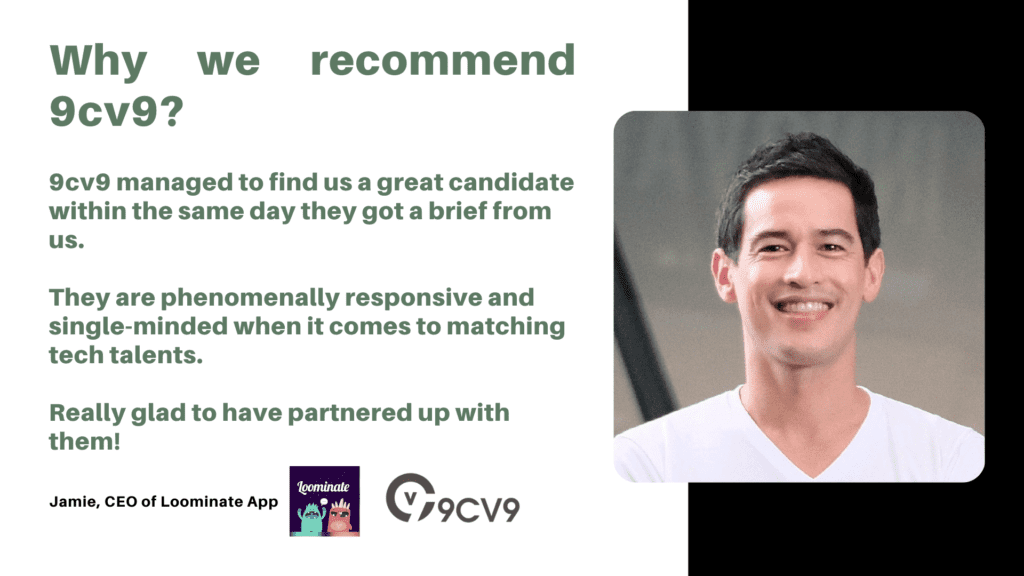
2. Recruitment Agencies
Working with recruitment agencies can streamline the hiring process and help businesses find highly qualified candidates quickly.
- 9cv9 Recruitment Agency
- A trusted recruitment agency that specializes in matching businesses with top talent.
- Offers end-to-end recruitment services, including candidate sourcing, screening, and placement.
- Example: A Calgary-based fintech company looking for AI engineers can use 9cv9 Recruitment Agency to find specialized talent.
- David Aplin Group
- A well-known Canadian recruitment agency that connects employers with professionals in various industries.
- Specializes in both permanent and contract placements.
- Example: An oil and gas firm in Calgary can use this agency to hire experienced geologists and drilling engineers.
- Express Employment Professionals
- A staffing agency that provides temporary, part-time, and full-time employees across different sectors.
- Example: A retail company in Calgary needing seasonal staff can rely on Express Employment Professionals for quick hires.
- Randstad Canada
- A global recruitment firm with a strong presence in Calgary, offering talent acquisition services for IT, engineering, and healthcare sectors.
- Example: A tech startup can use Randstad to find data scientists and cloud computing experts.
3. Local Networking and Industry Events
Attending networking events, career fairs, and industry meetups can be an effective way to connect with potential employees in Calgary.
- Calgary Career Fairs
- Local career fairs provide direct access to job seekers from different backgrounds.
- Example: The Calgary Hiring & Post-Secondary Education Expo is ideal for companies looking to hire entry-level talent and recent graduates.
- Industry Conferences and Trade Shows
- Sector-specific events attract professionals who are looking to advance their careers.
- Example: The Global Petroleum Show in Calgary is a prime event for energy companies seeking engineers and technicians.
- Chambers of Commerce and Business Associations
- The Calgary Chamber of Commerce hosts networking events where businesses can connect with potential employees.
- Example: A legal firm looking for experienced paralegals can attend networking events hosted by the Calgary Legal Association.
4. University and College Partnerships
Partnering with local educational institutions allows businesses to access fresh graduates and emerging talent.
- University of Calgary Career Services
- Employers can post job openings, host recruitment events, and offer internships.
- Example: A tech company hiring AI researchers can collaborate with the University of Calgary’s computer science department.
- Southern Alberta Institute of Technology (SAIT)
- Provides work-integrated learning programs that connect students with businesses.
- Example: A manufacturing company in Calgary can recruit mechanical engineering students for internships.
- Mount Royal University
- Offers career fairs and employer networking sessions to help businesses find young professionals.
- Example: A marketing agency can use Mount Royal’s career center to hire social media managers and content creators.
5. Employee Referral Programs
Encouraging current employees to refer candidates can be a cost-effective and efficient hiring strategy.
- Benefits of Employee Referrals
- Referred candidates tend to be a better cultural fit and have higher retention rates.
- Reduces the time and cost of hiring.
- Example: A Calgary-based logistics company offering referral bonuses can attract high-quality warehouse staff.
- Implementing a Successful Referral Program
- Offer monetary incentives or rewards for successful referrals.
- Clearly define the referral process and eligibility criteria.
- Example: A SaaS company providing a $1,000 bonus for employees who refer developers that stay for more than six months.
6. Government Employment Programs and Job Banks
Employers can take advantage of government initiatives that connect businesses with job seekers.
- Job Bank Canada
- A federal government platform that provides free job postings and access to pre-screened candidates.
- Example: A construction company in Calgary can use Job Bank to find skilled laborers and site supervisors.
- Canada-Alberta Job Grant
- Helps businesses fund employee training and upskilling programs.
- Example: A hospitality business in Calgary can use this program to train new hotel managers.
- Immigration and Work Permit Programs
- The Alberta Immigrant Nominee Program (AINP) allows businesses to hire foreign workers for in-demand occupations.
- Example: A healthcare provider hiring internationally trained nurses can use the AINP to facilitate work permits.
7. Social Media and Digital Marketing Strategies
Leveraging social media platforms can significantly boost hiring efforts and attract a wider pool of candidates.
- Facebook and Instagram Job Ads
- Targeted job ads can help employers reach passive job seekers.
- Example: A Calgary restaurant hiring chefs can run location-based ads on Facebook.
- Twitter and Reddit Hiring Communities
- Engaging with industry-specific forums and hashtags can help businesses connect with potential hires.
- Example: A digital marketing agency can use #CalgaryJobs on Twitter to attract content creators.
- Company Career Pages
- Maintaining an updated career page on the company’s website improves employer branding.
- Example: A fintech firm showcasing employee testimonials and office culture can attract top-tier finance professionals.
Conclusion
Finding employees in Calgary in 2025 requires a multi-channel approach that combines online job portals, recruitment agencies, networking events, and university partnerships. Employers can leverage platforms like 9cv9 Job Portal and 9cv9 Recruitment Agency to efficiently connect with top talent. Additionally, tapping into local career fairs, employee referrals, and social media marketing can further enhance recruitment efforts. By using a combination of traditional and modern hiring methods, businesses can attract skilled professionals and build a strong workforce in Calgary’s dynamic job market.
4. The Hiring Process: Steps to Recruit Top Talent
Recruiting top talent in Calgary requires a structured and strategic hiring process to ensure that businesses attract, assess, and onboard the most qualified candidates. With the evolving job market and increasing competition for skilled professionals, employers must adopt best practices to streamline their recruitment efforts. Below is a step-by-step guide to successfully hiring top talent in Calgary in 2025.
1. Crafting a Clear and Compelling Job Description
A well-written job description is crucial to attracting the right candidates. It should clearly outline the role, responsibilities, and qualifications required.
Key Components of an Effective Job Description
- Job Title
- Use clear, standardized job titles that align with industry norms.
- Example: Instead of “Tech Wizard,” use “Senior Software Engineer.”
- Company Overview
- Provide a brief summary of the company, including its mission, values, and workplace culture.
- Example: A Calgary-based renewable energy firm should highlight its commitment to sustainability and innovation.
- Job Responsibilities
- List the key duties in bullet points to make the description easy to read.
- Example: “Develop and maintain web applications using React and Node.js.”
- Required Qualifications
- Include essential skills, experience levels, and educational requirements.
- Example: “Bachelor’s degree in finance, CPA designation preferred.”
- Salary Range and Benefits
- Providing a salary range helps attract serious candidates.
- Mention perks such as remote work, health benefits, and professional development opportunities.
2. Choosing the Right Hiring Channels
Selecting the appropriate platforms for job postings ensures that employers reach qualified candidates.
Online Job Portals
- 9cv9 Job Portal
- Connects employers with skilled professionals in Calgary.
- Advanced filtering options to match job postings with relevant candidates.
- Example: A growing Calgary startup looking for a marketing manager can use 9cv9 to find candidates with digital marketing experience.
- LinkedIn Jobs
- Ideal for targeting mid-to-senior-level professionals and passive job seekers.
- Indeed Canada
- Offers both free and sponsored job postings for maximum visibility.
Recruitment Agencies
- 9cv9 Recruitment Agency
- Provides end-to-end recruitment services, including candidate sourcing, screening, and onboarding.
- Example: A healthcare provider in Calgary can rely on 9cv9 to find certified nurses and medical assistants.
- David Aplin Group & Randstad Canada
- Specialized recruitment firms that connect employers with professionals in IT, finance, and engineering.
Networking Events and University Partnerships
- Calgary Career Fairs – Direct access to job seekers across industries.
- University of Calgary & SAIT – Collaborate on internship and graduate hiring programs.
3. Screening and Shortlisting Candidates
Effective screening helps filter out unqualified applicants and ensures that only the best candidates move forward.
Application Review Process
- Scan resumes for relevant experience, skills, and educational background.
- Use applicant tracking systems (ATS) to automate resume screening.
Preliminary Phone Screening
- Short 10-15 minute calls to assess a candidate’s basic qualifications and cultural fit.
- Example Questions:
- “What interests you about this role?”
- “Can you walk me through your experience in this field?”
Skills Assessment & Testing
- Technical Tests – For IT and engineering roles, conduct coding or problem-solving tests.
- Situational Judgement Tests – Evaluate problem-solving abilities in customer service or management roles.
4. Conducting Effective Interviews
Interviews provide deeper insights into a candidate’s skills, personality, and alignment with company culture.
Types of Interviews
- One-on-One Interviews – Traditional format to assess in-depth expertise.
- Panel Interviews – Involve multiple interviewers to get diverse perspectives.
- Behavioral Interviews – Use the STAR method (Situation, Task, Action, Result) to assess past experiences.
- Virtual Interviews – Convenient for remote hiring, especially in a hybrid work environment.
Interview Questions to Ask
- General Fit Questions
- “Why do you want to work with our company?”
- “What are your long-term career goals?”
- Technical & Role-Specific Questions
- Example: For a data analyst role – “How do you handle large datasets, and what tools do you use?”
- Cultural Fit & Soft Skills Questions
- “How do you handle conflicts in a team setting?”
- “Describe a time when you had to adapt to a major workplace change.”
5. Checking References and Background Verification
Verifying a candidate’s past employment and credentials ensures credibility and reliability.
Steps in the Reference Check Process
- Contact previous employers or managers for feedback.
- Confirm job titles, responsibilities, and performance levels.
- Example: A Calgary finance firm should verify a candidate’s CPA designation before hiring.
Background Checks
- Criminal record checks for roles requiring security clearance.
- Credit history checks for financial sector jobs.
6. Making a Competitive Job Offer
A well-structured job offer increases the likelihood of a candidate accepting the position.
Elements of a Strong Job Offer
- Competitive Salary – Based on market research and industry standards.
- Comprehensive Benefits Package – Health insurance, retirement plans, and paid leave.
- Flexible Work Arrangements – Hybrid or remote work options if applicable.
- Sign-on Bonuses – To attract high-demand talent.
Negotiating the Offer
- Be open to discussing salary adjustments based on the candidate’s expertise.
- Example: A senior software engineer with 10+ years of experience may negotiate a higher salary than initially offered.
7. Onboarding and Employee Integration
A smooth onboarding process ensures that new hires adapt quickly and feel engaged from day one.
Pre-Onboarding Preparation
- Send welcome emails with company policies and work schedules.
- Assign an onboarding buddy or mentor.
First Day and Orientation
- Introduction to team members and key stakeholders.
- Overview of company values, mission, and expectations.
- Example: A Calgary-based hospitality company should provide new employees with customer service training from day one.
Training and Development Programs
- Continuous learning opportunities through workshops and online courses.
- Example: An IT firm can offer certification programs in cloud computing for new hires.
8. Retention Strategies to Keep Top Talent
Retaining employees is as important as hiring them. Offering growth opportunities and fostering a positive work culture reduces turnover.
Employee Engagement Initiatives
- Regular feedback and performance evaluations.
- Employee wellness programs to promote work-life balance.
- Example: A Calgary-based HR consultancy can implement leadership training to develop future managers internally.
Career Growth and Advancement
- Clear career progression paths with promotions and salary increments.
- Example: A construction firm can create a structured pathway from junior engineer to senior project manager.
Conclusion
Hiring top talent in Calgary in 2025 requires a structured and strategic approach. Employers must leverage job portals like 9cv9, work with recruitment agencies such as 9cv9 Recruitment Agency, and use a combination of networking events, university partnerships, and social media recruitment to attract the best candidates. By following a comprehensive hiring process—from crafting compelling job descriptions to onboarding and retention—businesses can build a skilled and motivated workforce that contributes to long-term success.
5. Legal Considerations and Compliance in Hiring
Hiring employees in Calgary requires businesses to comply with various legal regulations to ensure fair, ethical, and lawful employment practices. From anti-discrimination laws to employee contracts and workplace safety standards, employers must understand and adhere to local, provincial, and federal employment laws to mitigate risks and foster a legally compliant hiring process. Below is an in-depth guide to the legal considerations and compliance requirements for hiring in Calgary in 2025.
1. Understanding Employment Laws in Alberta
Employers in Calgary must follow Alberta’s employment regulations, which are governed by both provincial and federal laws.
Key Legislation Governing Hiring Practices
- Alberta Employment Standards Code (ESC)
- Establishes minimum employment conditions, including wages, overtime, and termination.
- Example: Employers must pay at least the provincial minimum wage, which may be adjusted annually.
- Alberta Human Rights Act
- Prohibits discrimination in hiring based on race, gender, age, religion, disability, or other protected characteristics.
- Example: An employer cannot reject a candidate solely because they require accommodations for a disability.
- Canada Labour Code (For Federally Regulated Businesses)
- Applies to industries like banking, telecommunications, and transportation.
- Covers workplace health and safety, hours of work, and leave entitlements.
- Occupational Health and Safety (OHS) Act
- Mandates safe working conditions, including compliance with workplace safety regulations.
- Example: A construction company must provide protective equipment and safety training for new hires.
- Personal Information Protection Act (PIPA) & Privacy Act
- Regulates the collection, use, and disclosure of personal information during the hiring process.
- Employers must obtain consent before conducting background checks.
2. Job Posting and Recruitment Practices
Employers must ensure job postings and recruitment efforts align with Alberta’s human rights and labor laws.
Avoiding Discriminatory Job Descriptions
- Job postings should focus on skills, experience, and qualifications rather than personal attributes.
- Example: Instead of stating “Seeking young and energetic candidates,” use “Seeking individuals with strong physical stamina for warehouse operations.”
Fair and Transparent Hiring Practices
- Provide equal opportunities for all qualified applicants.
- Avoid bias in screening, interviews, and selection processes.
- Example: Employers should use structured interviews with standardized questions to ensure fair candidate evaluations.
Compliance with Pay Transparency Regulations
- Employers may be required to disclose salary ranges in job postings to ensure wage equity.
- Example: A tech company hiring a software developer should include the expected salary range in the job listing.
3. Background Checks and Reference Verification
Employers must conduct background checks in compliance with Alberta’s privacy and employment laws.
Types of Background Checks
- Criminal Record Checks – Required for roles in security, healthcare, and finance.
- Employment Verification – Confirming past job titles, responsibilities, and performance.
- Educational Verification – Ensuring degrees and certifications are valid.
Legal Requirements for Background Checks
- Employers must obtain written consent from candidates before conducting background checks.
- Information collected must be relevant to the job and should not be used to discriminate.
- Example: A financial institution may require a credit check for a senior accountant role, but not for a receptionist position.
4. Employment Contracts and Offer Letters
All new hires should receive a written employment contract outlining their rights and responsibilities.
Key Components of a Legally Compliant Employment Contract
- Job Title and Description – Clearly defining the role and expectations.
- Compensation and Benefits – Specifying salary, bonuses, and health benefits.
- Hours of Work and Overtime Policies – Aligning with Alberta’s employment standards.
- Termination Clauses – Outlining notice periods and severance entitlements.
- Confidentiality and Non-Compete Agreements – Protecting business interests.
- Example: A Calgary-based software company hiring a developer may include an intellectual property clause to safeguard proprietary code.
5. Compliance with Workplace Diversity and Inclusion Laws
Promoting diversity and inclusion in hiring helps companies comply with legal requirements and enhance workplace culture.
Key Diversity Regulations
- Employment Equity Act – Requires federally regulated employers to ensure fair hiring for women, Indigenous peoples, persons with disabilities, and visible minorities.
- Alberta Human Rights Commission Guidelines – Encourages inclusive hiring practices.
Best Practices for Inclusive Hiring
- Implement blind resume screening to reduce unconscious bias.
- Use diverse hiring panels to assess candidates fairly.
- Provide accommodations for candidates with disabilities, such as accessible interview locations.
- Example: A retail employer should ensure that candidates who require wheelchair access can participate fully in interviews.
6. Employee Classification and Independent Contractors
Misclassifying employees as independent contractors can lead to legal penalties and backdated tax liabilities.
Employee vs. Independent Contractor
- Employees:
- Receive a fixed salary and benefits.
- Have taxes deducted by the employer.
- Employers must comply with minimum wage and overtime laws.
- Independent Contractors:
- Are self-employed and responsible for their own taxes.
- Have flexible work arrangements.
- Employers must provide clear contractual agreements to avoid misclassification.
Legal Implications of Misclassification
- Employers may be liable for unpaid wages, taxes, and benefits if a contractor is deemed an employee.
- Example: A startup hiring a freelance graphic designer for a short-term project should ensure the contract states that they are not an employee.
7. Workplace Safety and Occupational Health Regulations
Employers must provide a safe and healthy work environment in compliance with Alberta’s Occupational Health and Safety (OHS) Act.
Key Safety Requirements
- Conduct safety training and risk assessments.
- Provide necessary personal protective equipment (PPE).
- Implement emergency preparedness plans.
Employer Responsibilities Under OHS Laws
- Maintain proper records of workplace injuries.
- Offer workers’ compensation coverage through the Workers’ Compensation Board (WCB) Alberta.
- Example: A manufacturing company in Calgary must conduct regular safety drills and equipment maintenance to prevent workplace accidents.
8. Termination and Employee Dismissal Laws
Employers must follow legal guidelines when terminating employees to avoid wrongful dismissal claims.
Notice Periods and Severance Pay
- Termination With Cause: No notice or severance required if an employee engages in misconduct.
- Termination Without Cause: Requires a notice period or severance pay based on length of employment.
- Example: An employee working for five years is entitled to a minimum of five weeks’ notice or equivalent pay.
Legal Considerations When Dismissing an Employee
- Provide a written termination letter specifying the reason for dismissal.
- Ensure that termination does not violate human rights or labor laws.
- Offer outplacement services to support employees transitioning to new jobs.
Conclusion
Legal compliance in hiring is critical for businesses in Calgary to avoid costly disputes, fines, and reputational damage. Employers must adhere to Alberta’s Employment Standards Code, Human Rights Act, and Occupational Health and Safety regulations while ensuring fair hiring practices. By understanding employment laws, implementing inclusive recruitment strategies, and maintaining proper employment contracts, businesses can create a legally sound hiring process that attracts and retains top talent in 2025.
6. Retaining and Onboarding Employees for Long-Term Success
Attracting top talent is just the first step in building a strong workforce. To achieve long-term business success, companies in Calgary must prioritize effective onboarding and employee retention strategies that enhance job satisfaction, improve productivity, and reduce turnover. A well-structured onboarding process helps new hires integrate smoothly into the organization, while retention strategies ensure employees remain engaged, motivated, and committed for the long term. Below is a comprehensive guide to onboarding and retaining employees in Calgary in 2025.
1. The Importance of Employee Onboarding
Why Effective Onboarding Matters
- Reduces employee turnover by making new hires feel valued.
- Accelerates time-to-productivity, ensuring employees contribute effectively.
- Strengthens company culture by aligning new employees with organizational goals.
- Improves job satisfaction, leading to higher employee engagement.
Key Onboarding Statistics for 2025
- Companies with a structured onboarding process experience 82% higher employee retention.
- Employees who undergo strong onboarding are 70% more productive within the first three months.
- 69% of employees are more likely to stay with a company for three years if they experience a great onboarding process.
2. Building a Comprehensive Onboarding Program
Pre-Onboarding: Preparing for a New Hire’s First Day
- Send a welcome email with company resources, an employee handbook, and job expectations.
- Set up IT equipment, software access, and workspace in advance.
- Assign a mentor or buddy to provide guidance during the first few weeks.
- Example: A Calgary-based tech firm can send an interactive digital handbook before the first day, helping employees familiarize themselves with company policies.
Day One: Creating a Positive First Impression
- Conduct a formal introduction to the team, department heads, and leadership.
- Provide a tour of the workplace (for in-office employees) or a virtual tour (for remote workers).
- Explain company values, mission, and long-term goals to foster alignment.
- Example: A retail company can organize a welcome lunch or team-building activity to encourage social interaction.
First Week: Training and Role-Specific Integration
- Implement structured training sessions to familiarize employees with job responsibilities.
- Encourage participation in real-world tasks under supervision.
- Schedule regular check-ins with managers to address questions and concerns.
- Example: A marketing agency in Calgary may provide hands-on training sessions for new hires to work on live client projects within their first week.
First 90 Days: Performance Evaluation and Engagement
- Set clear performance milestones to measure progress.
- Offer continuous feedback to help employees improve.
- Conduct a formal review at the 90-day mark to assess job satisfaction and engagement.
- Example: A healthcare organization can use a performance-tracking system to monitor patient-care interactions for new nurses and provide coaching as needed.
3. Employee Retention Strategies for Long-Term Success
Creating a Positive Work Culture
- Promote open communication and encourage employee feedback.
- Foster collaboration and teamwork to create a supportive work environment.
- Recognize and celebrate employee achievements.
- Example: A Calgary-based startup can implement a peer recognition program where employees can publicly appreciate colleagues for their contributions.
Offering Competitive Compensation and Benefits
- Conduct market research to ensure salaries remain competitive in Calgary’s job market.
- Provide health benefits, wellness programs, and retirement plans to enhance job satisfaction.
- Offer performance-based bonuses to reward high-performing employees.
- Example: A financial services firm in Calgary can offer additional incentives such as stock options to retain top-tier employees.
Investing in Employee Growth and Development
- Provide continuous learning opportunities, including workshops and certifications.
- Offer mentorship programs to guide career development.
- Create internal promotion opportunities to encourage employees to grow within the company.
- Example: A tech company can sponsor employees for AI and data analytics certification programs to keep them ahead of industry trends.
Encouraging Work-Life Balance
- Implement flexible work schedules and remote work options.
- Encourage employees to take vacation and mental health days without stigma.
- Provide on-site wellness programs, such as yoga and mindfulness sessions.
- Example: A Calgary-based digital marketing firm can allow employees to work from home twice a week to promote work-life balance.
Enhancing Employee Engagement
- Organize team-building activities and social events to strengthen workplace relationships.
- Conduct regular employee surveys to assess job satisfaction and make improvements.
- Encourage cross-functional collaboration to prevent stagnation.
- Example: A construction company can host quarterly retreats where employees from different departments collaborate on business improvement strategies.
4. Leveraging Technology for Retention and Onboarding
HR Software and Automation Tools
- Use onboarding software to streamline paperwork and training modules.
- Implement employee engagement platforms to track performance and feedback.
- Leverage AI-driven HR tools for real-time employee sentiment analysis.
- Example: A logistics firm in Calgary can use an HR management system like BambooHR to automate onboarding and track employee satisfaction levels.
Gamification in Onboarding and Training
- Introduce interactive learning modules for new hires.
- Implement reward-based training programs to encourage skill-building.
- Example: A retail company can use a gamified training app where employees earn points for completing product knowledge assessments.
5. Reducing Employee Turnover in Calgary’s Competitive Job Market
Identifying Reasons for Turnover
- Conduct exit interviews to understand why employees leave.
- Analyze turnover trends to identify problem areas.
- Address workplace issues proactively to prevent attrition.
Building Employee Loyalty
- Strengthen manager-employee relationships through one-on-one mentorship.
- Show appreciation and recognition through awards and incentives.
- Align company values with employee career aspirations to foster long-term commitment.
- Example: A hospitality business in Calgary can offer long-serving employees additional vacation days as a retention incentive.
Creating a Strong Employer Brand
- Develop an attractive company reputation through employee testimonials and workplace culture initiatives.
- Use social media and job platforms to highlight positive employee experiences.
- Example: A corporate law firm in Calgary can showcase its diverse and inclusive work environment through LinkedIn posts featuring employee success stories.
6. The Role of 9cv9 Job Portal and 9cv9 Recruitment Agency in Onboarding and Retention
How 9cv9 Supports Calgary Employers
- Job Listings and Recruitment Services
- Helps companies find skilled professionals across industries.
- Provides AI-driven candidate matching for faster hiring.
- Onboarding Assistance
- Offers customized onboarding solutions for new hires.
- Provides resources and training materials for smoother transitions.
- Retention-Focused HR Solutions
- Assists in employee engagement programs to improve job satisfaction.
- Provides career growth opportunities through training partnerships.
- Example: A manufacturing company in Calgary can use 9cv9’s recruitment platform to hire specialized engineers and streamline their onboarding with HR automation tools.
Conclusion
To ensure long-term success, Calgary-based companies must implement structured onboarding programs and effective retention strategies that foster engagement, growth, and job satisfaction. A well-integrated employee experience—enhanced by technology, strong workplace culture, and competitive benefits—significantly reduces turnover while boosting overall productivity. By partnering with platforms like 9cv9 Job Portal and 9cv9 Recruitment Agency, businesses can streamline their hiring, onboarding, and retention efforts, securing top talent for sustainable growth in 2025.
7. Future Hiring Trends in Calgary
As Calgary’s job market continues to evolve, businesses must stay ahead of emerging hiring trends to attract, retain, and develop top talent. Driven by technological advancements, demographic shifts, economic conditions, and evolving workforce expectations, the hiring landscape in 2025 will see significant transformations. Companies that adapt to these trends will gain a competitive edge in securing skilled professionals while fostering a dynamic and future-ready workforce.
1. Increased Adoption of AI and Automation in Recruitment
AI-Driven Talent Acquisition
- Automated resume screening: AI-powered applicant tracking systems (ATS) will streamline candidate shortlisting.
- Chatbots for initial interviews: AI-driven chatbots will conduct pre-screening assessments, reducing the workload of HR teams.
- Predictive hiring analytics: Data-driven AI tools will forecast a candidate’s success based on historical hiring data.
- Example: A Calgary-based fintech company can use AI-powered recruitment platforms like HireVue to assess candidates through automated video interviews, analyzing speech patterns and body language.
Automated Job Matching Platforms
- AI will enhance candidate-job matching by analyzing skills, experiences, and cultural fit.
- Platforms like 9cv9 Job Portal will use AI-driven algorithms to connect employers with ideal candidates.
- Smart recommendations will help job seekers find roles aligned with their career goals and industry demand.
2. Rise of Remote and Hybrid Work Models
Remote Work Becomes a Standard Option
- More Calgary companies will offer full-time remote roles to expand their talent pool.
- Businesses will hire global remote workers for specialized roles in IT, marketing, and finance.
- Example: A Calgary-based software development firm may recruit a remote cybersecurity specialist from Toronto due to talent shortages in Alberta.
Hybrid Work Models Gain Popularity
- Flexible work arrangements will become essential to attract top talent.
- Employees will expect a blend of in-office collaboration and remote work flexibility.
- Calgary businesses will invest in hybrid-friendly digital tools, such as virtual meeting platforms and cloud-based project management software.
- Example: An oil and gas consultancy in Calgary may adopt a hybrid schedule where employees work remotely three days a week and collaborate in the office for key meetings.
3. Skills-Based Hiring Over Traditional Degrees
Emphasis on Skills Over Formal Education
- Companies will shift from degree-based hiring to skills-first hiring to address labor shortages.
- Employers will assess candidates based on:
- Technical skills (coding, data analysis, cybersecurity).
- Soft skills (problem-solving, adaptability, communication).
- Certifications and hands-on experience rather than just formal degrees.
- Example: A Calgary-based startup may hire a data analyst with Google Data Analytics Certification instead of requiring a university degree.
Micro-Credentials and Certifications on the Rise
- Short-term courses from platforms like Coursera, LinkedIn Learning, and Udemy will gain recognition.
- Employers will sponsor employees for industry-relevant certifications.
- Example: A Calgary-based renewable energy company may prioritize hiring candidates with certifications in sustainable energy management rather than just engineering degrees.
4. Growth of Diversity, Equity, and Inclusion (DEI) Initiatives
Diverse Hiring Practices
- Companies will adopt blind recruitment techniques to eliminate hiring bias.
- More organizations will implement inclusive job descriptions to attract underrepresented talent.
- Businesses will expand hiring efforts for Indigenous professionals, women in STEM, and persons with disabilities.
- Example: A Calgary-based engineering firm may implement structured interview scoring to ensure fair candidate evaluation.
DEI Training and Inclusive Workplaces
- Employers will train HR teams on unconscious bias to improve hiring decisions.
- Businesses will create employee resource groups (ERGs) to support diverse talent.
- Example: A multinational oil company in Calgary may establish a mentorship program for female engineers to encourage career growth in a male-dominated industry.
5. Expansion of Green Jobs and Sustainable Careers
Demand for Sustainability Experts
- Renewable energy jobs will increase due to government incentives for clean energy projects.
- More companies will hire sustainability consultants, carbon footprint analysts, and environmental engineers.
- Example: A Calgary-based energy firm may hire a climate risk analyst to help transition operations toward net-zero emissions.
ESG (Environmental, Social, Governance) Job Growth
- Companies will seek ESG specialists to meet environmental regulations and corporate responsibility goals.
- Green finance roles, such as sustainable investment analysts, will gain prominence in Calgary’s banking sector.
- Example: A major Calgary bank may hire an ESG compliance officer to oversee responsible investment strategies.
6. Gig Economy and Freelance Workforce Expansion
More Companies Hiring Contract and Freelance Talent
- Organizations will leverage independent contractors for short-term projects.
- Companies will partner with freelance platforms like Upwork and Fiverr for specialized work.
- Example: A digital marketing agency in Calgary may hire freelance graphic designers instead of maintaining a full-time design team.
Rise of Fractional Employment
- Senior professionals will take on part-time leadership roles across multiple organizations.
- Businesses will hire fractional CFOs, CMOs, and HR consultants to optimize costs.
- Example: A Calgary-based e-commerce company may hire a fractional CFO to oversee financial planning without employing a full-time executive.
7. Tech-Driven Recruitment and Employee Experience
Virtual and Augmented Reality in Hiring
- Companies will use VR-based job simulations to assess candidate performance.
- Augmented reality (AR) will enhance virtual office tours for remote candidates.
- Example: A Calgary-based architecture firm may conduct virtual job assessments where candidates design 3D models using AR tools.
HR Tech and Employee Experience Platforms
- Companies will implement AI-driven employee engagement platforms.
- HR teams will use automated performance tracking and sentiment analysis tools.
- Example: A retail company may use Qualtrics EmployeeXM to analyze job satisfaction and retention risks.
8. Employer Branding and Social Media Recruitment
Stronger Online Employer Presence
- Companies will use LinkedIn, Instagram, and TikTok to showcase workplace culture.
- Employer branding efforts will include employee testimonials and behind-the-scenes workplace videos.
- Example: A hospitality company in Calgary may run a social media campaign highlighting employee success stories to attract talent.
AI-Powered Social Recruiting
- AI will analyze social media profiles to identify passive candidates.
- Companies will automate job postings on multiple platforms for maximum reach.
- Example: A recruitment agency may use LinkedIn’s AI-powered Recruiter tool to find tech talent in Calgary.
9. The Role of 9cv9 Recruitment Agency in Future Hiring Trends
How 9cv9 Supports Calgary Employers
- AI-Powered Talent Matching
- Uses predictive hiring analytics to connect companies with high-potential candidates.
- Flexible Hiring Solutions
- Assists in recruiting full-time, remote, and gig workers based on business needs.
- Diversity and Inclusion Consulting
- Provides guidance on bias-free hiring and inclusive workplace strategies.
- Example: A growing startup in Calgary can partner with 9cv9 Recruitment Agency to access a diverse talent pipeline while automating hiring processes.
Conclusion
As the Calgary job market shifts in 2025, companies must adopt AI-driven recruitment, flexible work models, skills-based hiring, and sustainability-focused roles to stay competitive. By leveraging technology, DEI strategies, and employee experience platforms, businesses can attract and retain top talent while future-proofing their workforce. Partnering with 9cv9 Recruitment Agency and AI-powered job portals will further streamline hiring and ensure long-term success in Calgary’s evolving labor landscape.
Conclusion
As Calgary’s job market continues to evolve, businesses must adopt strategic hiring practices to attract and retain top talent. The city’s economic landscape, shaped by technological advancements, labor market fluctuations, government policies, and workforce expectations, requires employers to stay ahead of recruitment trends. Whether hiring for traditional, remote, or hybrid roles, companies must embrace AI-driven recruitment, diversity initiatives, competitive compensation packages, and strong employer branding to secure the best candidates in 2025.
1. Embracing a Competitive Hiring Landscape
- Calgary’s job market is growing, particularly in key industries such as technology, energy, healthcare, and finance.
- With increasing demand for skilled professionals, companies must streamline their hiring processes and adopt data-driven recruitment strategies.
- The labor market is experiencing talent shortages in specialized roles, making it crucial for businesses to implement skills-based hiring and offer competitive employment packages.
2. Leveraging AI and Digital Hiring Tools
- AI-powered recruitment platforms are revolutionizing the hiring process by automating resume screening, job matching, and initial interviews.
- Businesses should integrate predictive analytics to assess candidate success rates and enhance hiring decisions.
- Chatbots and virtual hiring assistants can improve applicant engagement and provide a seamless hiring experience.
- Example: A Calgary-based software development firm can utilize AI-driven recruitment software to reduce hiring time and improve candidate selection accuracy.
3. Expanding Recruitment Efforts to Attract Top Talent
- Remote and hybrid work models allow companies to hire talent beyond Calgary, broadening the talent pool.
- Social media platforms like LinkedIn, Indeed, and specialized job boards are critical for sourcing skilled professionals.
- Partnering with staffing agencies and recruitment firms, such as 9cv9 Recruitment Agency, can help businesses find pre-vetted candidates quickly and efficiently.
- Example: A fintech company in Calgary may work with a specialized recruitment agency to hire experienced data analysts and cybersecurity experts.
4. Enhancing Employer Branding and Candidate Experience
- A strong employer brand helps companies stand out in a competitive hiring market.
- Organizations must highlight their work culture, career growth opportunities, and employee benefits through digital platforms and social media.
- Providing a seamless and engaging candidate experience ensures higher offer acceptance rates.
- Example: A Calgary-based hospitality company can showcase employee testimonials and behind-the-scenes workplace videos to attract job seekers.
5. Prioritizing Diversity, Equity, and Inclusion (DEI) in Hiring
- Employers must integrate inclusive hiring practices to foster a diverse and dynamic workforce.
- DEI-focused recruitment ensures that businesses attract a wide range of qualified candidates, including underrepresented groups.
- Companies should implement bias-free hiring tools, structured interviews, and diversity training to create an inclusive work environment.
- Example: A Calgary-based engineering firm may introduce anonymous resume screening to eliminate unconscious bias in hiring decisions.
6. Offering Competitive Salaries and Benefits
- The job market in Calgary is highly competitive, requiring businesses to offer market-aligned compensation packages.
- Companies should provide comprehensive benefits such as:
- Health and dental insurance
- Work-from-home allowances
- Retirement savings plans
- Employee wellness programs
- Flexible work options, professional development programs, and clear career progression paths can increase employee retention.
- Example: A Calgary-based financial services company may offer tuition reimbursement and stock options to attract skilled financial analysts.
7. Leveraging Employee Referrals and Networking
- Employee referral programs can help businesses tap into their workforce’s professional networks to find high-quality candidates.
- Engaging with local universities, trade schools, and industry associations can create strong pipelines for future hires.
- Attending job fairs, career expos, and networking events allows companies to connect with top talent in Calgary.
- Example: A growing Calgary-based IT firm may collaborate with the University of Calgary to recruit recent graduates for entry-level developer roles.
8. Partnering with a Recruitment Agency for Efficient Hiring
- Recruitment agencies like 9cv9 Recruitment Agency provide expertise, industry insights, and access to a broad candidate network.
- These agencies can assist with talent sourcing, pre-screening, and candidate assessments, reducing hiring time.
- Partnering with a staffing firm allows businesses to focus on their core operations while ensuring they secure top-tier professionals.
- Example: A Calgary-based healthcare provider can work with a recruitment agency specializing in medical staffing to find experienced nurses and healthcare assistants.
Final Thoughts
Finding and hiring employees in Calgary in 2025 requires a strategic, tech-driven, and people-centric approach. Companies that leverage AI recruitment tools, embrace diversity and inclusion, offer competitive salaries, and build strong employer brands will gain a significant advantage in attracting and retaining top talent. As the job market continues to shift, businesses must stay agile, adopt new hiring technologies, expand their talent acquisition efforts, and create a positive workplace culture to ensure long-term success.
By implementing future-ready recruitment strategies and leveraging expert hiring solutions like 9cv9 Recruitment Agency, companies in Calgary can build high-performing teams that drive business growth and innovation in 2025 and beyond.
If you find this article useful, why not share it with your hiring manager and C-level suite friends and also leave a nice comment below?
We, at the 9cv9 Research Team, strive to bring the latest and most meaningful data, guides, and statistics to your doorstep.
To get access to top-quality guides, click over to 9cv9 Blog.
People Also Ask
How can I find employees in Calgary in 2025?
Use job portals like 9cv9, recruitment agencies, social media, networking events, and referrals to connect with top talent in Calgary.
What are the best job portals for hiring in Calgary?
Platforms like 9cv9, Indeed, LinkedIn, and Workopolis are among the top job portals for sourcing talent in Calgary.
Is hiring through recruitment agencies in Calgary effective?
Yes, agencies like 9cv9 Recruitment Agency streamline the hiring process by sourcing pre-vetted candidates, saving time and effort.
What industries have the highest demand for employees in Calgary?
Technology, energy, healthcare, construction, and finance sectors are experiencing high demand for skilled workers in Calgary.
How competitive is the job market in Calgary in 2025?
The job market is competitive due to rapid economic growth, requiring employers to offer attractive salaries, benefits, and flexible work options.
What legal requirements must I follow when hiring in Calgary?
Employers must comply with Alberta’s labor laws, minimum wage regulations, employment contracts, and workplace safety standards.
How do I ensure diversity and inclusion in my hiring process?
Use unbiased job descriptions, structured interviews, and targeted outreach programs to attract diverse talent.
What is the average hiring time for roles in Calgary?
The hiring process can take between two to six weeks, depending on the job role, industry, and availability of skilled candidates.
How much should I pay employees in Calgary?
Salaries vary by industry, but it’s essential to offer competitive wages aligned with market rates and Alberta’s labor laws.
What are the benefits of hiring remote employees in Calgary?
Remote hiring expands your talent pool, reduces overhead costs, and increases flexibility for both employers and employees.
Where can I find skilled workers for the tech industry in Calgary?
Tech talent can be sourced from job fairs, coding bootcamps, LinkedIn, and specialized job portals like 9cv9.
How can I improve my employer branding to attract talent in Calgary?
Showcase company culture, offer competitive perks, and maintain a strong online presence through LinkedIn and Glassdoor.
What are the best interview practices for hiring in Calgary?
Use structured interviews, assess both technical and soft skills, and provide timely feedback to candidates.
How do I conduct background checks on potential employees?
Employers can verify employment history, references, and criminal records through accredited background check services in Canada.
What tax incentives are available for hiring in Calgary?
Businesses may qualify for federal or provincial tax credits when hiring apprentices, students, or underrepresented job seekers.
How can I attract top talent in Calgary’s competitive market?
Offer competitive salaries, flexible work arrangements, career growth opportunities, and a strong company culture.
What is the minimum wage in Calgary in 2025?
Alberta’s minimum wage is subject to government updates, so check official sources for the latest rates.
How can I retain employees in Calgary for the long term?
Invest in employee training, career development, work-life balance, and competitive benefits to improve retention.
What are the top recruitment trends in Calgary in 2025?
AI-powered hiring, skills-based recruitment, and remote hiring are shaping the future of recruitment in Calgary.
How do I create an effective job description for hiring in Calgary?
Clearly outline job responsibilities, required skills, company culture, and benefits to attract qualified candidates.
What is the best way to onboard new employees in Calgary?
Implement a structured onboarding program with training, mentorship, and clear expectations for new hires.
Can I hire international employees in Calgary?
Yes, but employers must comply with Canadian immigration laws, including work permits and LMIA requirements.
What are the common hiring mistakes to avoid in Calgary?
Avoid unclear job descriptions, lengthy hiring processes, lack of competitive compensation, and poor candidate communication.
How do I assess a candidate’s cultural fit for my company?
Use behavioral interviews, personality assessments, and company value alignment questions to evaluate cultural fit.
What are the benefits of using AI in hiring for Calgary businesses?
AI-driven recruitment tools streamline candidate screening, improve hiring efficiency, and reduce hiring bias.
How do I stay updated on hiring laws and regulations in Calgary?
Regularly check Alberta’s labor laws, consult legal experts, and follow government updates on employment standards.
What are the best networking events for hiring talent in Calgary?
Industry conferences, career fairs, and business meetups provide excellent opportunities to connect with top professionals.
How do I hire part-time or seasonal workers in Calgary?
Use job boards, staffing agencies, and student employment programs to find temporary or seasonal workers.
What are the key skills in demand in Calgary’s workforce?
Technical skills, digital marketing, data analytics, and project management are among the most sought-after skills in 2025.
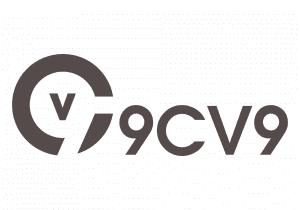










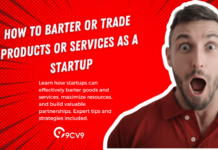




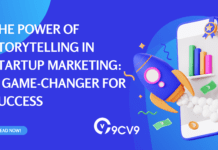





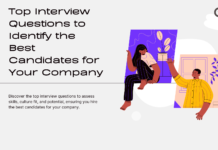


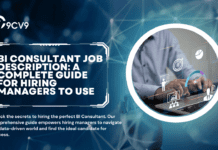


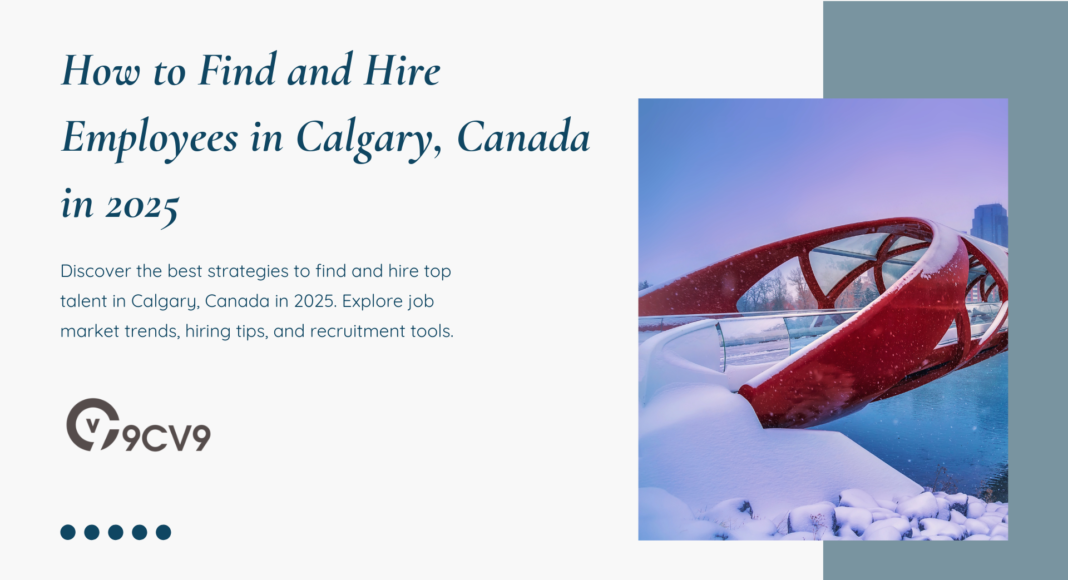


![Writing A Good CV [6 Tips To Improve Your CV] 6 Tips To Improve Your CV](https://blog.9cv9.com/wp-content/uploads/2020/06/2020-06-02-2-100x70.png)


